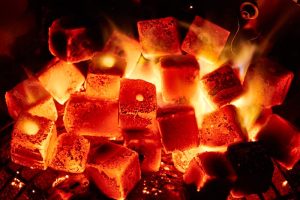
Briquettes: A Sustainable Alternative to Fossil Fuels
Briquettes are compressed blocks of combustible materials, usually made from agricultural waste or sawdust, which are commonly used as a source of fuel for cooking and heating. These small, dense blocks are becoming an increasingly popular choice for households, industries, and even governments around the world, as a sustainable alternative to fossil fuels.
In recent years, the global demand for energy demandeasing rapidly, with the International Energy Agency (IEA) predicting that it will continue to grow by more than a quarter over the next two decades. At the same time, the need to reduce greenhouse gas emissions and combat climate change has become more pressing than ever. Briquettes offer a solution to both of these challenges.
The production process of briquettes is simple and environmentally friendly. The raw materials used to make them are usually agricultural waste products, such as rice husks, sugarcane bagasse, and coconut shells, or sawdust from timber mills. These materials are readily available and often considered waste, which means that briquette production can help reduce waste and create an additional source of income for farmers and other producers.
The raw materials are first dried and then mixed with a binding agent, such as cassava starch or clay, before being compressed into blocks using a briquetting machine. This process results in briquettes that have a higher calorific value than the raw materials alone, making them a more efficient fuel source. Additionally, because they are more compact than loose waste materials, briquettes are easier to transport and store, which reduces transportation costs and increases efficiency.
One of the main advantages of briquettes is that they are a renewable and sustainable source of energy. Unlike fossil fuels, which are finite and non-renewable, briquettes can be produced indefinitely as long as there is a supply of raw materials. This makes them a long-term solution to the world’s energy needs, particularly in developing countries where access to fossil fuels is limited.
Briquettes also have a lower carbon footprint than traditional fossil fuels. Because they are made from agricultural waste products, the carbon emitted during their combustion is considered to be part of the natural carbon cycle. This means that briquettes do not contribute to the overall increase in atmospheric carbon dioxide levels in the same way that burning fossil fuels does.
In addition to their environmental benefits, briquettes also offer economic advantages. The production of briquettes can provide a source of income for farmers and other rural producers, particularly in developing countries where traditional industries may be struggling. Furthermore, because briquettes are a more efficient fuel source than loose waste materials, they can help reduce energy costs for households and businesses, particularly in areas where electricity is not readily available.
Governments around the world are also recognizing the potential of briquettes as a sustainable energy source. In India, for example, the government has launched a national program to promote the use of briquettes as a fuel source, particularly in rural areas. The program offers financial incentives and technical support to briquette producers and users, to reduce the country’s dependence on fossil fuels and improve the livelihoods of rural communities.
In conclusion, briquettes offer a sustainable and renewable alternative to traditional fossil fuels. They are produced using waste products and are a more efficient fuel source than loose waste materials, making them an environmentally friendly and cost-effective option for households, industries, and governments. As the world continues to grapple with the challenges of climate change and increasing energy demands, briquettes offer a practical solution that can help reduce carbon emissions, support rural development, and provide a sustainable source of energy for generations to come.